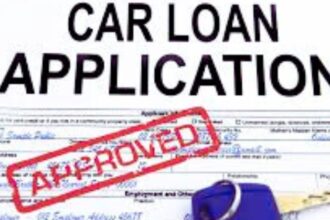Introduction to the Used Car Loan Process
Purchasing a used car is an affordable alternative to buying a new one, but for many, it requires financing through a used car loan. Whether you’re upgrading your vehicle or buying your first car, understanding the used car loan process is essential. Often, buyers are confused by the myriad of options and the steps involved. The process can seem overwhelming if you’re not familiar with how car loans work.
Fortunately, securing a used car loan can be a straightforward process when you know what to expect. This article will guide you through the entire process, from researching loan options to completing your application and receiving approval. By the end, you’ll feel confident in your ability to navigate the process and secure a great deal.
Read on to discover all the details, tips, and steps you need to successfully finance your next used car purchase.
Step 1: Assess Your Loan Eligibility
Before applying for a used car loan, it’s important to assess your eligibility. Lenders typically look at several factors, such as your credit score, income level, and debt-to-income ratio. These elements play a key role in determining whether you qualify for a loan and the interest rate you’ll receive.
Credit Score
One of the first things lenders will look at is your credit score. A higher score increases your chances of securing a loan with better terms, such as a lower interest rate. If your credit score is below 600, you may need to explore options for subprime loans or work on improving your credit before applying.
Income and Employment
Lenders will also want to ensure that you have a stable income source to repay the loan. Be prepared to provide proof of employment and income, such as pay stubs or bank statements, when you apply for a used car loan.
Debt-to-Income Ratio
Your debt-to-income (DTI) ratio helps lenders determine whether you can comfortably handle additional debt. A lower DTI ratio indicates that you are less likely to default on a loan, which can result in a more favorable loan offer.
Step 2: Choose the Right Loan Type
When financing a used car, you have several loan options to choose from. The two main types of loans are direct loans and dealer loans. Let’s take a look at the pros and cons of each.
Direct Loans
A direct loan comes from a financial institution, such as a bank, credit union, or online lender. This option allows you to shop around for the best interest rates and terms. It’s also a good choice if you want more flexibility in choosing your car from different sellers.
Pros:
-
Often offers lower interest rates.
-
Greater flexibility in choosing your car.
-
You can secure a loan in advance.
Cons:
-
The approval process may take longer.
-
Requires more paperwork and documentation.
Dealer Loans
A dealer loan, also known as dealership financing, is offered through the car dealership. While this is convenient, it’s essential to compare the loan’s terms with other options to ensure you’re getting a good deal.
Pros:
-
Fast and easy approval process.
-
Can be convenient, especially if you’re purchasing the car from the dealership.
Cons:
-
May come with higher interest rates.
-
Limited flexibility in choosing lenders.
Step 3: Gather Required Documents
To apply for a used car loan, you’ll need to submit certain documents to the lender. These documents verify your identity, income, and financial history, allowing the lender to assess your loan application.

Basic Documents Needed
-
Proof of Identity – A government-issued ID, such as a driver’s license or passport.
-
Proof of Income – Pay stubs, bank statements, or tax returns to verify your earnings.
-
Proof of Residence – Utility bills or rental agreements showing your current address.
-
Social Security Number (SSN) – Lenders will use this to check your credit report and eligibility.
Some lenders may also require additional documents depending on their policies.
Step 4: Compare Loan Offers
Once you’ve gathered your documents and assessed your eligibility, it’s time to compare loan offers. Shop around to find the best loan terms, including the interest rate, loan duration, and any fees involved. Even a small difference in interest rates can result in significant savings over the life of your loan.
Interest Rates
Interest rates play a crucial role in the total cost of your used car loan. A lower interest rate means you’ll pay less in the long run, so it’s essential to compare rates from multiple lenders.
Loan Term
The loan term refers to the length of time you’ll have to repay the loan. Shorter terms typically come with higher monthly payments but lower interest costs. Longer terms may have more affordable monthly payments, but they can result in paying more interest over the life of the loan.
Step 5: Submit Your Application
Once you’ve chosen the best loan offer, it’s time to submit your application. This process may vary slightly depending on whether you’re working with a bank, credit union, or dealership.
Online Applications
Many lenders now offer online applications, which can be a fast and convenient way to apply for a used car loan. Fill out the online form, upload your documents, and wait for approval. Be prepared to answer any follow-up questions the lender may have.
In-Person Applications
Alternatively, you may choose to apply in person at a local bank or credit union. This allows you to ask questions directly and receive immediate feedback.
Step 6: Review the Loan Terms
Once approved for a loan, carefully review the loan terms before signing the agreement. Pay attention to the following:
-
Interest Rate: Is it competitive based on your credit score and the market?
-
Monthly Payments: Are the payments affordable given your budget?
-
Prepayment Penalties: Does the loan allow you to pay off the balance early without penalties?
Ensure that you fully understand the terms before committing.
Step 7: Close the Deal and Take Ownership
After reviewing the loan terms, sign the loan agreement and complete the purchase of your used car. The lender will likely transfer the loan amount to the dealership or seller, and you’ll be responsible for making monthly payments moving forward.
Additional Tips for Financing a Used Car
-
Consider a Co-Signer: If your credit score is low, consider asking a trusted friend or family member to co-sign the loan. This can improve your chances of approval and secure better terms.
-
Check Your Loan’s APR: Be sure to check the loan’s APR (annual percentage rate), as this includes both the interest rate and any additional fees.
-
Stay Within Your Budget: When selecting a used car, ensure that the monthly payment fits within your budget. Don’t be tempted to stretch your finances for a higher-priced vehicle.
Conclusion
Navigating the used car loan process may seem daunting at first, but with careful planning and understanding of the key steps, it can be a smooth and rewarding experience. By assessing your eligibility, comparing loan offers, and reviewing your options, you’ll be well on your way to financing a car that fits both your needs and your budget.
Ready to start your journey? Begin researching loan offers today and take control of your next used car purchase.










